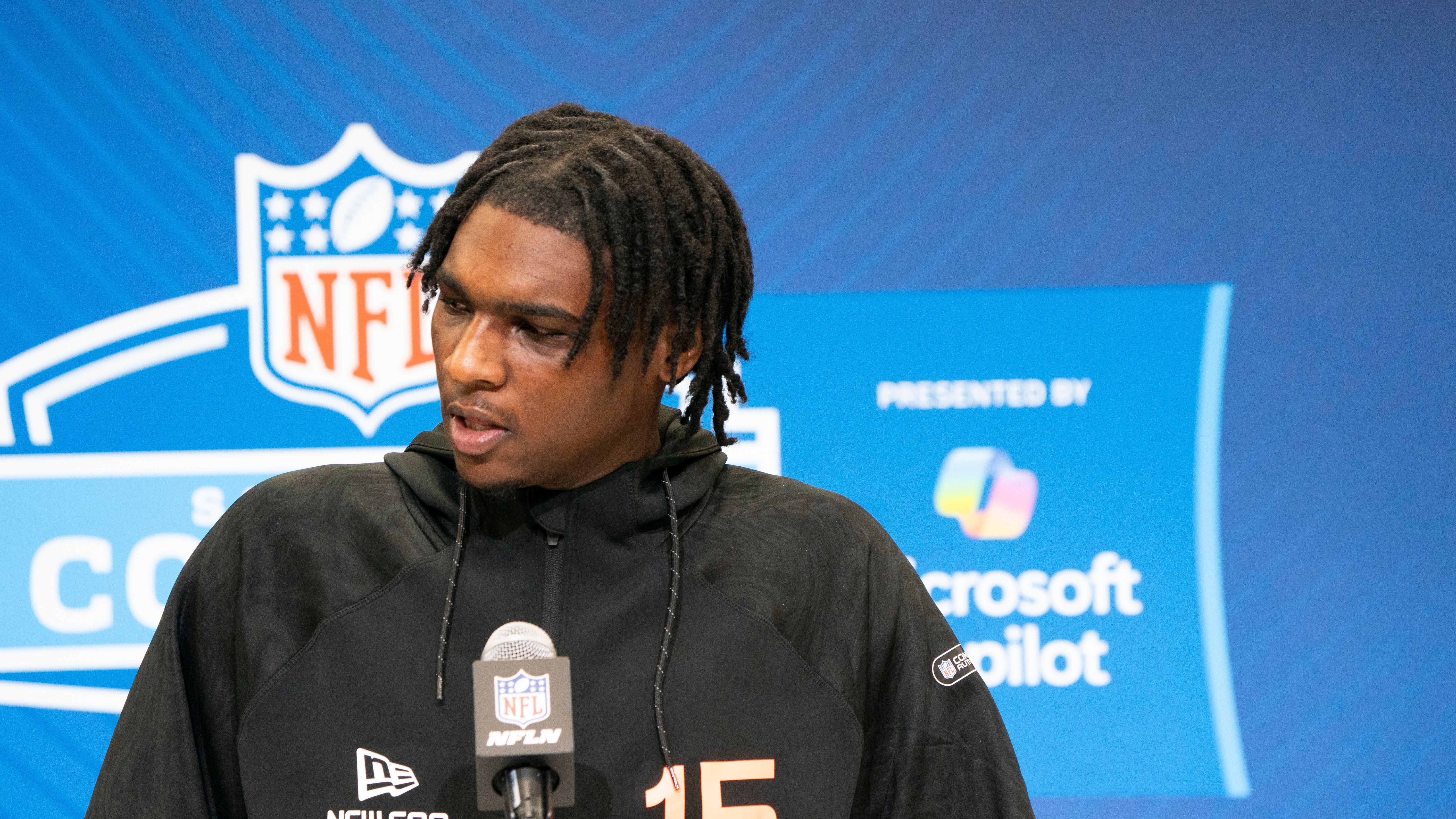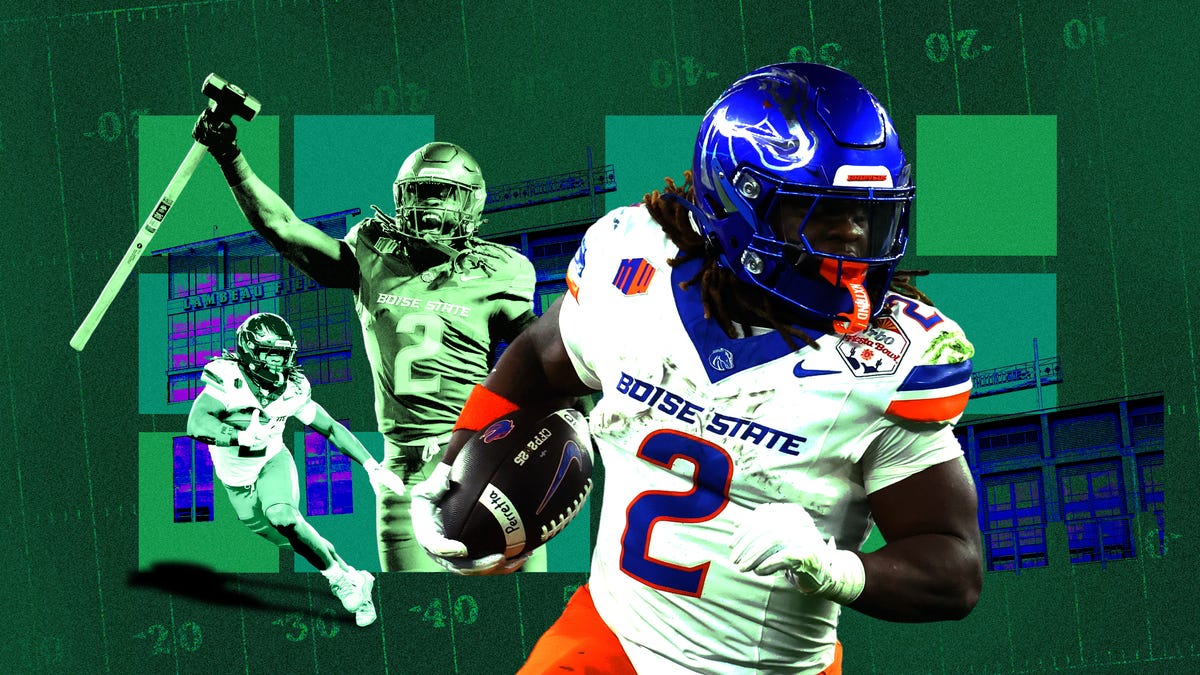
Miami QB Cam Ward’s pro day leaves no doubts about No. 1 NFL draft pick
Cam Ward is feeling confident after his pro day performance. He tells the media why he thinks he will be the number one overall draft pick in April.
Perhaps no position group in the NFL is more divisive than running backs. Especially when it comes to determining their value – although the 2024 offseason and the subsequent results undoubtedly changed some hearts and minds – and, along those lines, the ideal time to select one during the draft.
The deepest skill position in the 2025 draft class is running back. ESPN draft expert Jordan Reid has 32 draft grades on running backs, while The Athletic’s Dane Brugler has 30. That itself is somewhat historic. Particularly if NFL front offices and personnel departments agree, and 30 running back prospects indeed hear their name over the course of seven rounds of the draft, which begins April 24.
“That just goes to show you how deep this running back class is,” Reid said.
That class begins with Ashton Jeanty from Boise State. But it doesn’t end there. Not even close.
Depth everywhere
Jeanty is the elite prospect of the current running back class. After him, however, it’s mostly a series of tiers teams will be choosing from on the second and third days of the draft.
“The interesting part is – and a lot of this comes from talking to people around the league – is because of the depth of the class, and it’s really good that, man, if you have multiple needs, maybe you could see a scenario where teams are going to punt on running backs early,” NFL Media draft analyst Daniel Jeremiah said, “and then just know that I still got some options there on day two.”
Whether teams use their selection in the first or second rounds compared to a later one depends on their own rankings. Teams have the flexibility to address a need at a different position that doesn’t contain as many valuable prospects first before coming back to the backs.
“There’s going to be running backs, and if you say, ‘Hey, I can get this guy in the third, fourth, fifth round,’ then you can wait a little bit,” ESPN draft analyst Mel Kiper Jr. said.
That strategy isn’t lost on the backs themselves.
“I know this running back class is very deep,” Tahj Brooks, who played at Texas Tech, told USA TODAY Sports. “It’s good for the running back market.”
RBs for thee on Day 2 or 3?
Teams seeking to fill their backfields through the middle rounds of the draft will have these options, among others:
Dylan Sampson (Tennessee): The Southeastern Conference Offensive Player of the Year who eclipsed the 1,000-yard mark in a pass-heavy offense. According to Reid, he also has catching prowess and is a “slasher type” who can make guys miss in the second and third levels of the defense and can be effective in both inside or outside zone. Reid can see a team spending a third round pick on him.
Kaleb Johnson (Iowa): According to Jeremiah, “someone who I just think is that one-cut, foot-in-the-ground, speed and go. He’s got excellent vision.” His 4.57 40-yard dash wasn’t elite but “he has burst, and he has long speed.”
TreVeyon Henderson (Ohio State): Game-breaking ability, home-run type hitter who is also exceptional in the pass-blocking game. “Then he can run routes. He can pluck it,” Jeremiah said.
Quinshon Judkins (Ohio State): Jeremiah envisions him “like a finisher.” Against Penn State in the College Football Playoff semifinal, he helped the Buckeyes seal the game with an impressive four-minute drill showing. “He has got balance, strength, power,” Jeremiah said.
RJ Harvey (Central Florida): As USA TODAY Sports’ draft expert Michael Middlehurst-Schwartz wrote, “underestimate the 5-8, 205-pounder at your own peril.” He possesses understated physicality, although “he’s at his best when he’s slicing and accelerating.”
Cam Skattebo (Arizona State): The Heisman finalist barely participated at the NFL scouting combine in February and has speed concerns, but the physicality is undeniable, and his performance in the College Football Playoff for the Sun Devils will certainly stick in the minds of decision-makers.
Tahj Brooks (Texas Tech): Brugler gave him a fifth-round grade, and Brooks posted consecutive 1,500-yard seasons as a junior and senior that included 22 straight games of 95 rushing yards or more. His versatility in being able to run in counter, power and outside zone schemes is what he hopes will help him stand out. His pass blocking is one of the best parts of his game, Brooks said. He didn’t catch the ball much with the Red Raiders but said “I pride myself on having great hands. You need that at the next level.”
Back to the first round
Jeanty, the Heisman runner-up and Boise State standout, is a lock to be a first round pick, with a healthy amount of mock drafts slotting him in the top half of that round. He’s been forecasted to the Las Vegas Raiders at No. 6 overall, in addition to the Chicago Bears (10th) or Dallas Cowboys (12th).
Omarion Hampton from North Carolina – the second-ranked running-back prospect, per USA TODAY Sports – has also been linked to the Bears and Cowboys should Jeanty be off the board. The Denver Broncos and Pittsburgh Steelers are also potential landing spots at 20th and 21st, respectively. (Both teams will almost certainly be leaving the draft with a rookie back or two.)
“I do think that Jeanty and Hampton are a cut above,” said Kiper, who mocked Jeanty to the Raiders despite his philosophy of not taking a running back in the first round, especially early.
“You’re going to play as well as a rookie as you’re going to play – it’s the only position you can say that about,” Kiper said.
Impact of 2024 free agency could help mid-round RBs
The current crop of RB prospects owes some debt of gratitude to Saquon Barkley, Derrick Henry and Josh Jacobs. All three signed (somewhat undervalued) deals in free agency last year before turning in superb 2024 campaigns (and in Barkley’s case, historic).
For years, the league had become more pass happy. Many around the NFL saw last season as the pendulum swinging the other way. But it’s worth noting those free agent success stories were the result of teams that had strengths throughout the roster.
“My theory is you take the running back when you have everything in place, that all his carries matter,” Jeremiah said. “I just don’t want to give away carries. They only have so many carries in their body, and I want them all to matter and to count for something.”
This offseason’s free agency group – outside of Aaron Jones, who returned to the Minnesota Vikings – wasn’t as star-studded. Hence, teams could wait until the middle rounds to help build out their “carries-by-committee” contingent.
Comparisons to 2017 NFL draft
The 2017 draft marked the last time 30 backs were selected. Four to five years from now, the 2025 running-back class might be mentioned in the same breath as ‘17, Reid said.
“I think it’s very similar to what we saw in 2017,” he said.
However, it is “not as star-studded at the top,” in Reid’s opinion. That class featured Christian McCaffrey (eighth overall), Leonard Fournette (fourth overall), Joe Mixon (second round), Dalvin Cook (second round) and Alvin Kamara (third round).
“You need running backs to (have success) in the NFL,” he said.
Luckily for NFL teams this draft is overflowing with them.










